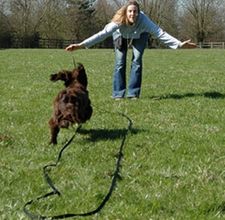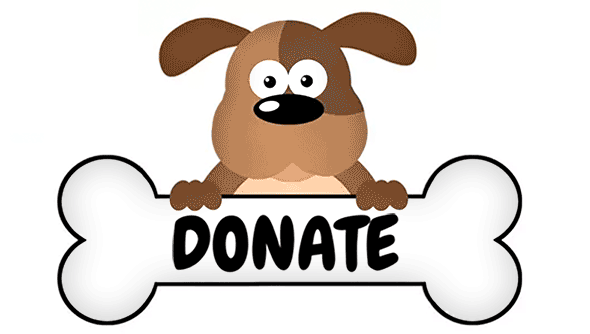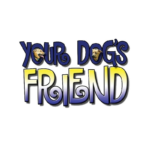
Coming When Called
Coming when called is one of the most important skills your dog can learn. After all, it can save your dog’s life. But it’s also one of those behaviors that’s hard to get right.
Below is a list of mistakes doggy parents make:
- Use the word “come” without training your dog what it means.
- Repeatedly screaming “come” while your dog ignores you.
- Call your dog to come when you want to do something he doesn’t like –bathe him, cut his nails, leave him for the day, etc.
- Call your dog to come to you when he’s having fun. (That will come later, but certainly not early in training.)
- Overuse the word “come” – come on, when you mean “let’s go”; come over, come out, come in, come here, come down – so that your dog has learned to ignore the word.
- Stop rewarding your dog for coming. Most of us stop rewarding our dog too soon, and we end up with a dog that will come inside but not outside, sometimes but not all the time.
- Punish your dog for coming to you. You may think you’re punishing him for running off in the first place, but that’s not how your dog will see it.
Teaching “come” correctly:
- Train your dog what “come” means slowly.
- Only use the word ONCE when training your dog. Only use the word ONCE when calling your dog. Say the word NICELY.
- Go and GET your dog when you’re going to do something your dog doesn’t enjoy (although you CAN teach your dog to enjoy nail trimming).
- Whenever there’s time, call your dog, reward him for coming, and then let him go have fun again.
- If your dog has learned to ignore the word “come”, change the word – something like “here”, “close”, or “front”. Everyone has to use the same word, and it has to mean the same thing – come here, without dawdling, and sit at my feet.
- Every time your dog comes, do something he loves. Give him a treat or a favorite toy! Rub his belly, or play a game. Be exciting! Make coming to you more fun than ANYTHING!
- NEVER punish your dog for coming to you – even if he is carrying your chewed shoe in his mouth. PRAISE your dog for coming. And praise him anytime he is within two feet of you. Think of it as a two foot “praise only zone”.
Teaching Your Dog To Come
Now, let’s teach it!
- Use your best treat ONLY for coming when called. To a dog, the smellier, the better.
- Put the treat directly in front of your dog’s nose.
- Say your dog’s name, then “come” (or whatever word you are using) in a happy voice.
- When you move your treat from your dog’s nose toward your body, take three quick steps backwards.
- Praise your dog like crazy for coming to you. Have a puppy party!
- Say the word you are using ONCE. You can pat your leg, use “happy talk”, or anything other than your word to keep your dog coming toward you.
- Start calling your dog for things your dog enjoys – for example, for meals, that special treat, a game of fetch or tug … Using play really helps! If, for example, your dog LOVES tennis balls, wait until your dog is relaxing, get a tennis ball, say “come” (or your word) in a happy voice, and bounce the tennis ball on the floor a couple of times. Your dog will come flying. Praise!!
- Reward your dog for coming to you by tossing the ball! Or, depending on what you called him for, giving him his treat, or meal, or playing tug …whatever your dog loves doing.
- Start by rewarding him just for coming. Once your dog is coming consistently, move on to waiting for your dog to sit and let you touch his collar. Then, reward. (If you’re using a clicker and shaping the behavior, work toward this goal.)
It’s important that you start to pattern the whole sequence of come, sit, let me touch your collar. If you dog comes and then runs off right away, it becomes a game, rather than a way to get your dog. Always touch under your dog’s chin, instead of looming over him. Rescue dogs, in particular, can feel threatened when someone, even you, reaches over them.
If Your Dog Knows “Touch”
If you have one of those dogs that loves playing “touch”, you can get a recall more easily than most. We had two neighbors both taking class. When one of their dogs got out, the other neighbor was able to get the dog back by putting out her hand and yelling “touch”. It gives the dog a target, and IT’S FUN! So, keep practicing “Touch” at different distances, and reward your dog with a treat and the Touch game when he comes. The exercises and games below can be modified for “Touch”.
Exercises for Home
#1:
Teach your dog to look at you when he hears his name. With your dog in front of you, say his name once. When he looks at you, click (if you are using a clicker), say “yes” or mark the behavior in some other way, and then drop a treat on the floor. This is so he looks away and you can continue to practice.
Once your dog looks at you when he hears his name, start tossing the treat farther away. Vary the distance from two to six feet. Your dog only has to make eye contact, not come to you. You are teaching him is to look at you, even, from a distance when he hears his name.
#2:
Be ready to reinforce your dog anytime he comes toward you without being asked. This may happen unexpectedly or because he hears the treat bag or can opener.
When he is just a few feet away, say his name, “come” and throw a party once he gets there. Whether the reward is food, play, a belly rub, or a special toy, something wonderful should happen each and every time.
You can gradually lengthen the distance before using your come word. Just don’t go too far too soon.
#3:
Have a treat hidden in your pocket or in a place you can get to quickly.
Run backwards as you call your dog to you and then surprise your dog with the hidden treat. Praise like crazy!
#4:
Have a partner hold your dog’s leash.
Wave a treat in front of your dog’s nose and take off running in the other direction.
Turn to face your dog and use your hand signal as well as your verbal cue (Come, Close, Here …)
Your partner should let go of your dog, so he can race to you.
When your dog gets to you, click or praise, and surprise your dog with the treat in your pocket.
Later in training, wait for the sit and touching your dog’s collar before rewarding. Remember not to reach over your dog.
Distractions
One of the reasons that it’s so important to practice recall exercises is so that your dog will come when you really need him to. If you only call your dog when he’s out loose and that squirrel runs by, don’t expect him to respond. He’s not being stubborn or “bad”. He just hasn’t had enough work inside, outside, with, and without distractions.
Distraction Exercises
(as suggested by author & trainer, Pat Miller, www.peaceablepaws.com)
#1:
Add distractions when calling your dog inside. Keep your dog’s leash on, in case you need to get him. Call your dog while a friend moves around, bounces a ball, etc. Start at a short distance every time you change the type of distraction; then, gradually increase the distance.
#2:
Take it outside, where you are competing with new smells, sights, and movements. Start close in with your dog on leash. As you are able to increase the distance, use a long line, so that your dog can’t run off to follow something more interesting than you.
#3:
Have a friend stand 20 feet away with a handful of treats. Your friend’s hand will be closed, not allowing the dog to get any of the treats. Call your dog, and do anything you can to encourage him to come. Slap your thigh, squeak a toy, jump around. When your dog decides that he isn’t getting anything from your friend and comes to you, reward him with your treats. Your friend should follow and give your dog her treats as well. WOW! Coming to you really paid off!
#4:
Put a plate with cat food (or other smelly food) on the side. Your friend will have a bowl that she can put over the plate if your dog goes there. Call your dog. If he comes to you, praise like crazy and run him over to the plate of cat food. If he goes to the food first, your friend should cover the plate with the bowl. He only gets the cat food if he comes to you first!
Games You Can Play
Round Robin Recalls:
Have your family or a group of friends sit in a large circle on the floor. Take turns calling the dog from human to human randomly and, when the dog comes to the person who called him, reward him with a treat. If the dog goes to the wrong person, that person should totally ignore the dog – no talking, eye contact, nothing.
WooHoo Hallway:
One person is at one end of a hallway or room, and the other person is at the other end. You then call your dog back and forth using treats as a reward when your dog gets to you, sits and lets you touch her collar.
Hide and Seek:
One person holds the dog on a collar and leash, while the other person hides. The hidden person calls once and rewards the dog for finding him. Remember to start off with an easy “hiding” place, like just around the corner, so your dog is sure to find you. If your dog doesn’t look for you, bring him to the place you were “hiding” and give him a treat (or special toy, or game of tug.) Next time, show your dog what you have before you hide and call him.
Go Home:
This is part game/part training for those times when it’s easier for a dog to go to a particular place, instead of a person. Show your dog that you are putting treats on the doormat, and then go for your walk. Say, “Go Home” just before getting to your front door. Gradually increase the distance, but always have your house visible at the time. Hold onto that leash, and be ready to run!
Tricks You Can Use While Working on Training
Your dog may not have a reliable recall, especially around distractions, when he suddenly gets out. Chasing him won’t help; he will just run away faster. So, how do you get your dog to come to you? Here are a few tricks.
- Clap your hands and say, “pup, pup, pup!” in a cheerful voice.
- Shake a treat can, and give your dog a treat when he gets to you. Yes, it’s a bribe, but it works while your dog is still learning to come.
- Run in the opposite direction. Play this chase game, even when you don’t need your dog to come, and “throw a puppy party” when your dog “catches” you. Do not use this method around young children or if you have a dog that already has a high prey drive.
- Suddenly get on the ground to look at the most interesting thing you have ever found. Be dramatic “what is it???” Dogs are very nosy creatures, and most dogs will stop whatever they’re doing to come to see what you’re looking at. At that point, praise your dog like crazy for coming to you!
- If your dog is completely focused on something else and is running quickly away from you, run alongside of your dog at a distance. You are running in the same direction as your dog but you are NOT chasing your dog. Your sudden movement should catch your dog’s attention. Say your dog’s name in a happy voice. If your dog doesn’t turn and run toward you, say your dog’s name in a happy voice again and suddenly turn and run in a different direction away from your dog. (This one is hard, but can work in an emergency.)
Key Points to Remember
- Motivate your dog to come by being exciting and fun.
- Never punish a dog that comes, no matter what the circumstances.
- When you know your dog will be coming anyway (like when he hears the food bowl, can opener, treat jar, or bouncing ball), tell him to “come”, and reward him when he gets there.
- Practice the chase game. You run away, call your dog to come, and reward him when he catches you.
- Say “COME” only once. If your dog has learned to ignore it, change the word. Don’t bark an order at your dog. Say it nicely.
- Don’t expect your dog to come when it matters if you haven’t worked on it.
- Training and practicing “come” should be part of your daily routine.
- Just because your dog has a perfect recall inside the house doesn’t mean that he is trained to come when he’s outside or around distractions. Once you have a reliable inside recall, move on to distractions inside, practice outside, and then with distractions outside.
- We give our dogs too much opportunity to ignore us. If your dog doesn’t have a leash or long line on, he can go after anything that’s more interesting.
- Keep up a high rate of reinforcement! Coming is too important a behavior to slack off on rewards. Vary the rewards, so that your dog won’t come only for food.
Resources:
The webinar, Dog Training Essentials – loose-leash walking & coming when called, was presented by Amie Glasgow of Oscar Winning Behavior. It’s on Your Dog’s Friend YouTube channel at https://www.youtube.com/watch?v=xXF4582HiRA
The Original Rocket Recall: Teach Your Dog to Come by Lisa Lyle Waggoner
Rocket Recall: Unleash Your Dog’s Desire to Return to You Through Motivation-Based Training by Simone Mueller
Still Need Help?
Contact Your Dog’s Friend at [email protected] or (301)983-5913 for advice and referrals or check out our list of recommended trainers and behaviorists.
Your Dog’s Friend is a nonprofit 501(c)(3) organization working to improve dogs’ lives, reduce problem behaviors, and keep dogs out of shelters, by educating and supporting their humans.
This material is not intended to be a substitute for professional help when dealing with dogs with intense or potentially dangerous behavior issues. Consult a positive reinforcement trainer or veterinary behaviorist for professional assessment, guidance, and support.




